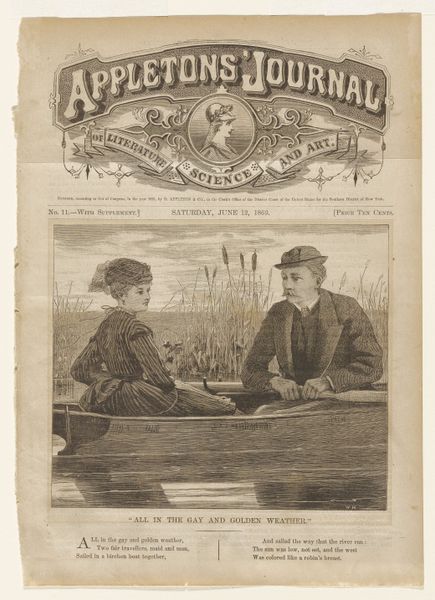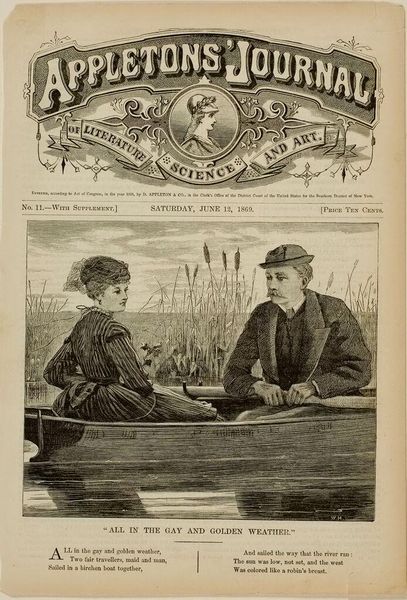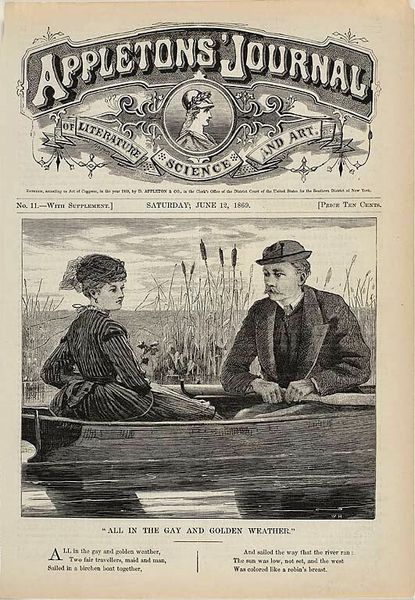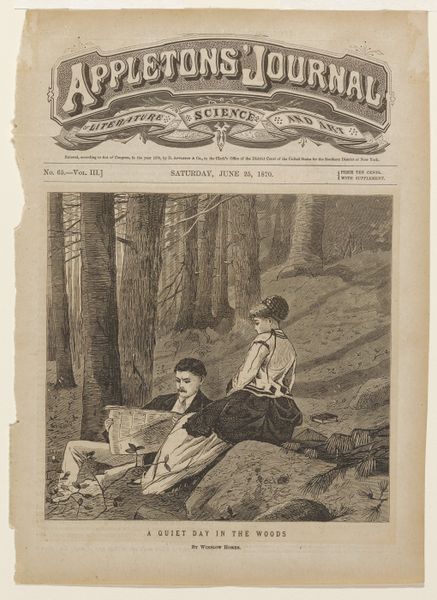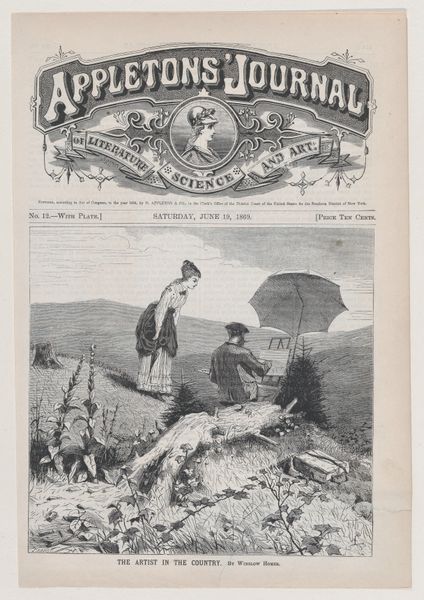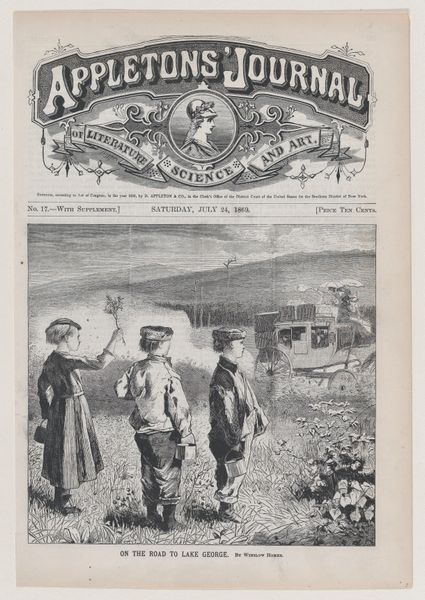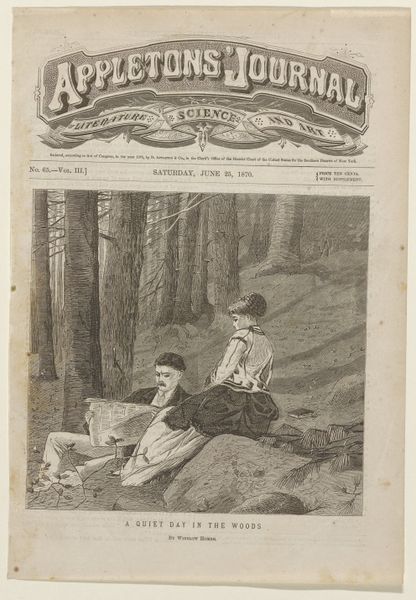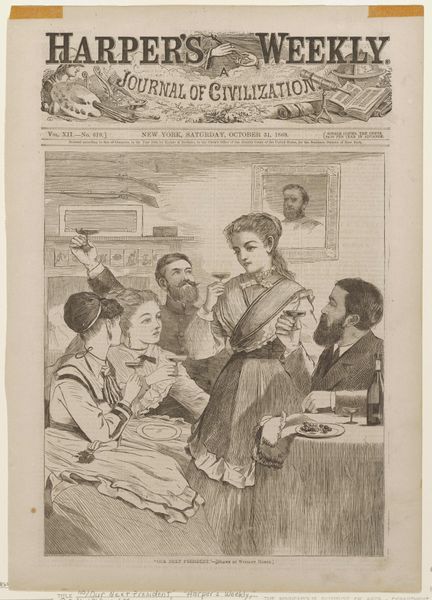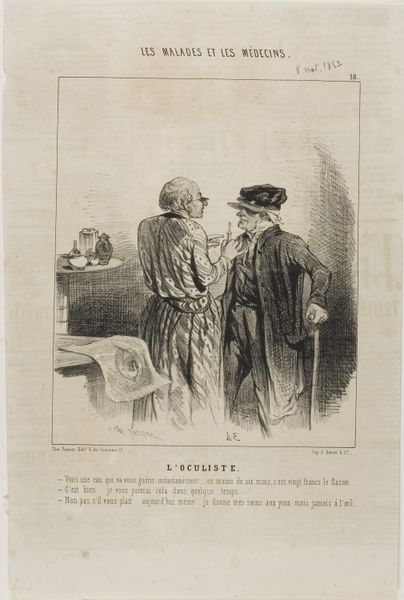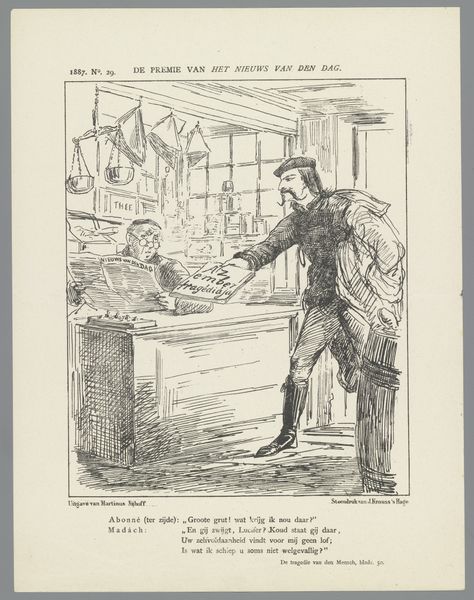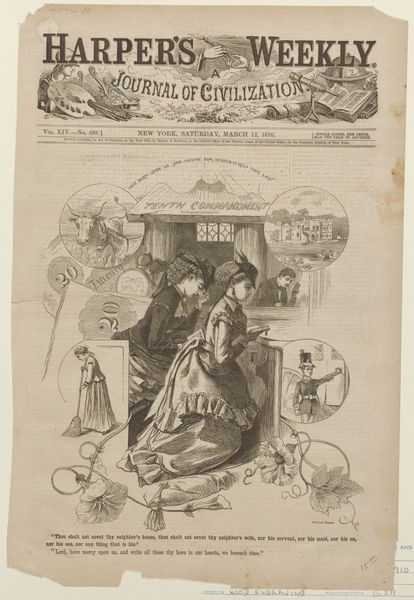
print, etching, woodcut, wood-engraving, engraving
#
narrative-art
# print
#
impressionism
#
etching
#
woodcut
#
19th century
#
united-states
#
genre-painting
#
wood-engraving
#
engraving
Dimensions: 5 1/2 x 6 1/2 in. (13.97 x 16.51 cm) (image)10 7/8 x 7 11/16 in. (27.62 x 19.53 cm) (sheet)
Copyright: Public Domain
Curator: Here we have "All in the Gay and Golden Weather," a wood engraving by Winslow Homer, published in 1869. Editor: My initial impression is of stillness, of a quiet intimacy. The monochromatic palette emphasizes the gentle reflections in the water. They appear becalmed in this little boat, and the whole thing is framed as a slice of life captured from a distance. Curator: It’s fascinating to consider this in the context of print culture at the time. This image was produced as an illustration for Appleton's Journal. The economics of reproduction, the availability of materials, all influence its aesthetic. Notice the texture achieved through wood engraving, how line work creates depth. It speaks to a democratized consumption of art, quite unlike an oil painting in a gallery. Editor: Precisely. But that choice of medium, that "democratization," also allows Homer to disseminate symbolic messages broadly. Look at the central imagery: the couple adrift on the water, the reeds representing nature's presence and persistence. It's reminiscent of older Arcadian ideals, now transplanted to the American landscape. The couple isn't engaging each other; it feels more symbolic of separate paths intertwined in a brief shared journey. Curator: Interesting take. I wonder about the labour involved. Engraving on wood is incredibly demanding. We tend to focus on Homer's artistry but shouldn't overlook the skilled artisans involved in bringing this image to the public. How were these artisans compensated? What were their working conditions? Those things really shape the production of art. Editor: That labor, those class issues… undoubtedly relevant. Yet, Homer uses these simple materials to conjure timeless themes: nature's embrace, fleeting youth, the subtle unease within relationships. That contrast between the overt sentimentality of the title versus the restrained, almost melancholic, interaction between the figures is what I find powerful. Curator: Right. Knowing this was made for mass consumption contextualizes the direct, representational style. There's an intent to connect with a broad audience through accessible imagery of contemporary life. It avoids excessive abstraction, instead prioritizing narrative clarity. Editor: Ultimately, a work that highlights the interplay between accessible production and symbolic richness. Curator: A compelling convergence indeed; it pushes us to think about the production and perception of art within a broader socio-economic framework.
Comments
No comments
Be the first to comment and join the conversation on the ultimate creative platform.
